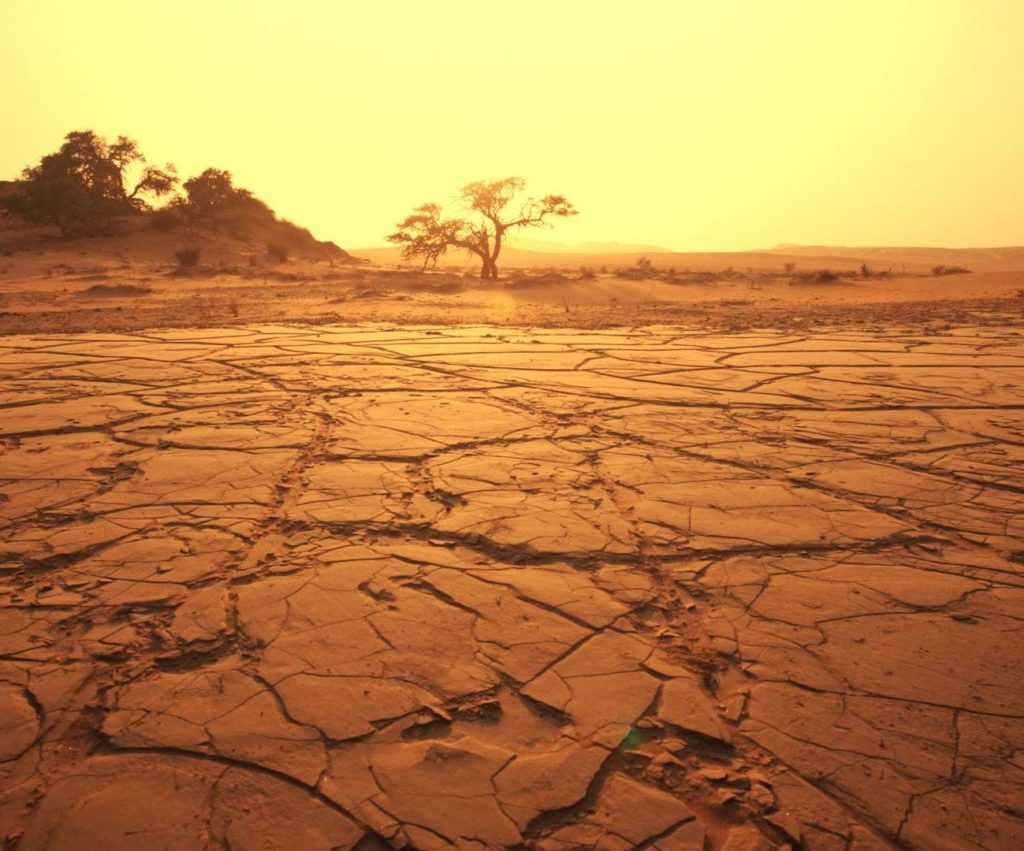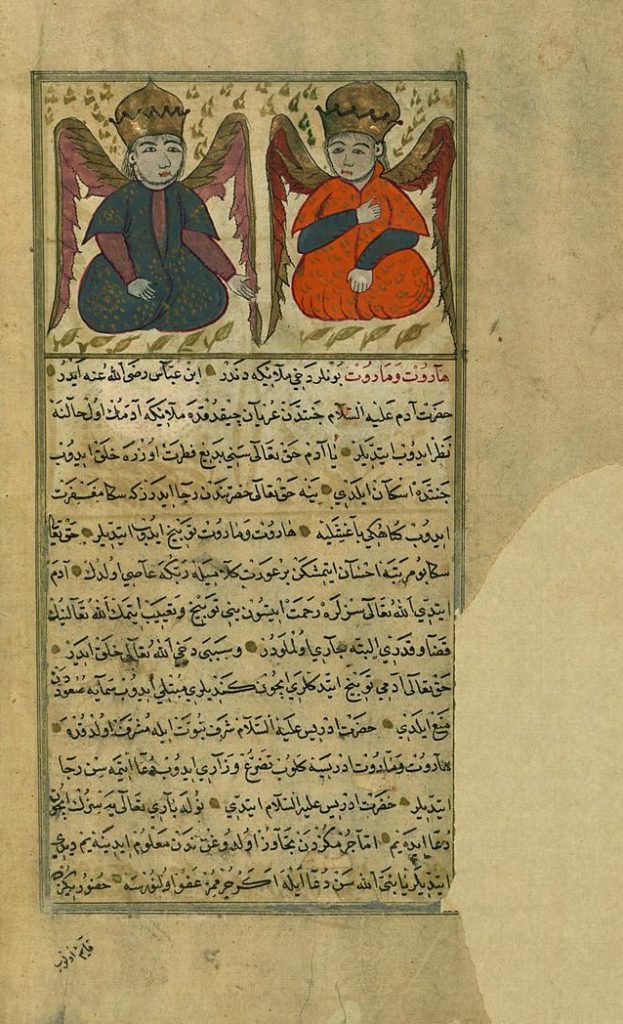
Islam has known, throughout its long history, multiple interpretations from which various schools of jurisprudence and fundamentalism arose. Each school had its intellectual and actual roots that nourished it and gave it special colours, confirming its specificity and distinctiveness. But the Salafist school, as an ijtihād and a tendency, goes beyond this and is characterized by the claim of its owners to possess absolute truths. The most important point that researchers have noticed for the theorists of this school is that it has Bedouin roots.
BY MAHMUD GABIR
IF ḤARRAN WAS THE BIRTHPLACE of Ibn Taymiyya – the legitimately considered father of the Salafi movement – then Najd is the birthplace of the second theorist of Salafism and the one governing its daʽwā. The crucial factor that combines Ḥarrān and Najd it is the desert. Where there is drought and remoteness from civilization, its inhabitants are characterized by roughness and coarseness, and throughout the length of Islamic history neither region experienced any broad civilisational movement or urbanisation. This was particularly the case with the country of Najd which was, and still is, home to nomadic tribes moving the year round in search of pasture and verdure.
Whenever we cast light on the geographical and human background of the Salafī movement, we do so to highlight the roots of some intellectual and behavioral phenomena that characterize this movement. The phenomenon of Salafism cannot be understood or analysed other than by returning to its original starting points. Desert nomadism, in particular, has a number of particular features known to anyone who has studied it or lived among its exponents. The harshness of the natural environment, the austerity of living conditions, the constant, unending search for pasture and water, and the consequent instability of life with its ever-present dangers, all this stamps the behaviour of the Bedouin individuals, and is manifested in the way they think and interact. The roughness, coarseness, harshness, simplicity of mind and deprivation from the advantages of civilization and culture, all these are features and conditions familiar to these Bedouins, manifested and passed down from the old to the young.
There is no doubt that the hyperbole for which they were famous and which accompanied their movement was caused by this obvious cognitive deficiency
Since Najd was the starting point of the Salafi-Wahhabi daʽwā, its fathers were the soldiers, followers and preachers of this movement. This movement necessarily was characterized by all the features of Bedouinism, above all its roughness and harshness, in addition to its weakness in knowledge and an intellect that was usually simplistic, and indeed ignorant and primitive. Muḥammad Asad in his work The Road to Mecca observed that:
many of their concepts (i.e. Wahhabist views) are primitive, and their religious zeal often borders on extremism.
There is no doubt that the hyperbole for which they were famous and which accompanied their movement was caused by this obvious cognitive deficiency. Neither in the past nor in the present has Najd been any sort of scholarly metropolis, and anyone there who wished to gain a share of knowledge and learning would migrate to Iraq, the Levant, Egypt or Madina.
Coarseness and narrow-mindedness
The country of Najd, at the dawn of the Wahhābī movement, was thus one steeped in ignorance, illiteracy and naive levels of knowledge. Yet after a short period of time, the people of that region would suddenly become scholars, jurists, and preachers of Islam and the doctrine of tawḥīd. [1]
And this not only within their narrow, desert geographic domain, but farther east and west too – where the trials of Islam and Muslims began with the perspective of these new preachers. What they accepted to be the truth was the ‘truth’, and what they knew nothing about was ‘falsehood’, something to be rejected and eliminated by the edge of the sword. On this, Dr. Muḥammad ‘Awaḍ Al-Khaṭīb says:
Wahhabism started from a special view on Islam, one that contained the maximum of puritanism and narrow-mindedness, and a mistrust of Muslims to the point of considering them, in advance, polytheists and unbelievers.
The narrow-mindedness and puritanism for which the preachers of Wahhabism were known was due not only to the desert environment but also to their primitive levels of knowledge, their intellectual naivety and the weakness of their training in Islamic thought. Muḥammad Salīm Al-Iskandarānī noted:
I met with many of their scholars and found them to be uniquely ignorant of places and learning.
Islamic thought has been experiencing major setbacks and atrophy form the day that Salafi-Wahhābism began to infiltrate the book, magazine and radio markets
As for the Nahḍa and Wahhābī Salafism, we no longer ask ourselves the important question: How can we rise again? How do we free ourselves from the economic, political and intellectual grip of colonialism? Instead our problems have become – and our authors have devoted themselves to writing on such topics as – if and how to shave the beard, what is to be the proper length and colour of one’s robe, what type and shape of shoes to wear, in order to conform to the practice of the righteous predecessors! Not only that, but the rod and the miswāk-toothpick, and how one should ride one’s mount!
If only the discrepancies were just at this level! Instead, sectarian and doctrinal strife spread among all the denominations of the one Islamic society, whereby infidels, polytheists, innovators, Sufis, the Rāfiḍa and adherents of the various sects now stood in one line, and the Salaf stood on the other facing it. Wars and jihads and counter-jihads broke out. In every Islamic gathering fierce conflicts break out between opposing views.
There is no way to stop these wars, at least in the short term, as long as oil is pumped out of the Gulf and the Salafist religious establishment takes its share of the proceeds to spend on supporting these wars and fueling the fire. One thinker stated the truth when he said that
We Arabs have benefited but little from this oil; the bulk of it goes to the West to increase its power and control over us. And the remainder is used to support evil and spread corruption in our Arab world. The oil-rich princes spread vice and support tyranny and oppression wherever they are. As for the religious scholars who get their share of this oil, they only disseminate hatred and deepen the sectarian rifts.
The model of intellectual backwardness of the Salafist kingdom, and its knowledge level, has been exported to the rest of the Islamic metropolises
As for Islam and Islamic thought, this has been experiencing major setbacks and atrophy from the day that Salafi-Wahhābism began to infiltrate the book, magazine and radio markets. The reader need only go to the nearest library to peruse the titles on offer there. He will Inevitably find a predominance of works such as:
The horrors of the Day of Resurrection
What the eye will see at the Resurrection
The Punishments of the Day of Resurrection
The torments of the grave
Munkar and Nakir[2]
Sorcery and the Jinn
A Dialogue with a Muslim Jinn
Herbal Medicines
The Black Seed
The Virtues of the Miswāk
The Ruling on Shortening one’s Garment
The Ruling on Trimming the Mustache
The list is very long.
As for books that deal with the economic, political or social reality of Muslims, or which study and analyze the negative phenomena of the general backwardness in which we live, these have disappeared from the library shelves. It appears that publishers print fewer of them because the demand has decreased, and few distributors are prepared to bear the burden of financial loss if they venture to issue such books and studies.
Thus, within a short period and specifically following the oil boom, the model of intellectual backwardness of the Salafist kingdom, and its knowledge level, has been exported to the rest of the Islamic metropolises. It would have turned into the greatest disaster, had it not been for political and ideological differences between the ruling Arab regimes, a fact which guaranteed some diversity and intellectual freedom. This is in sharp contradistinction to reality of Salafist life in the peninsula.

Suggested Reading
Nevertheless, the flooding of the Islamic market with Salafi books was made easy, especially after Arab governments realized that Salafi thought and its particular pre-occupations could form a barrier to the Islamic Awakening, whose triumphal march was disturbing them.
[1] See Glossary on this term.
[2] ‘The Denied and the Denier’, the two angles in Islamic eschatology who test the faith of the dead in their graves. After death they prop up the deceased soul upright in the grave and ask three questions: Who is your Lord? What is your religion? Who is your prophet? A righteous believer will respond correctly. Scholars have identified the origins of the belief as stretching back to ancient Mesopotamia, where the Assyrian term Nakuru (‘enemy’) was an epithet of the astral god Nergal, who was a lord of the Underworld and the grave. (Ed.)
See Part One of this essay here


